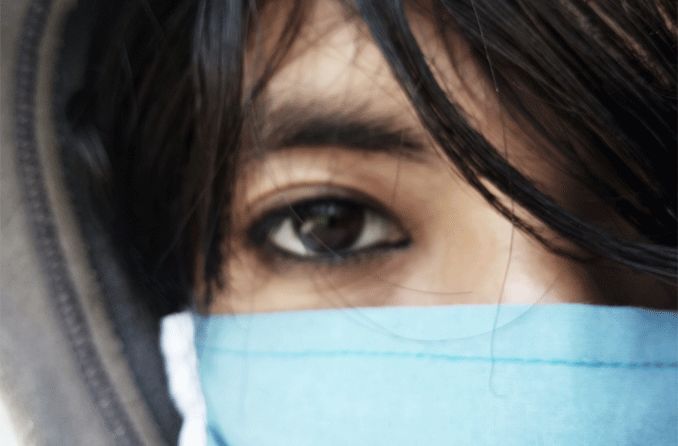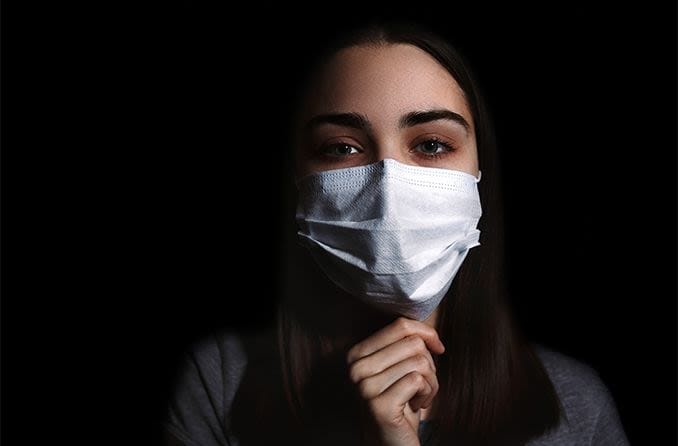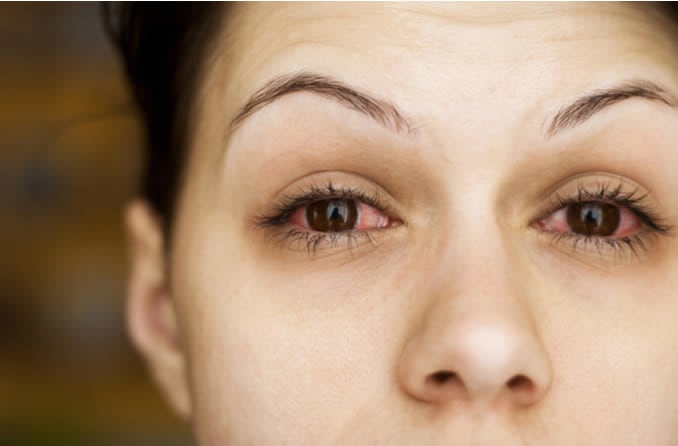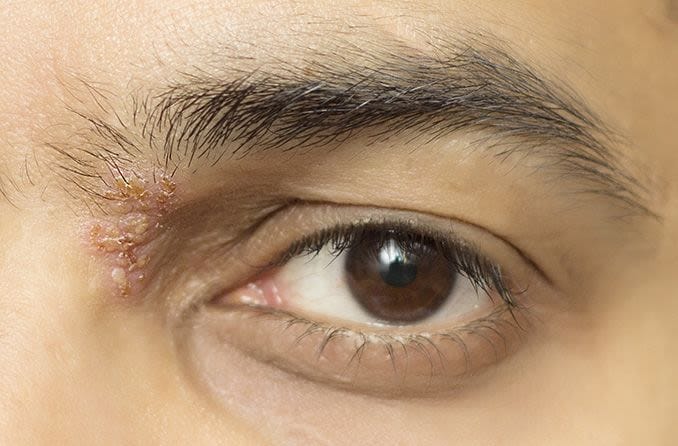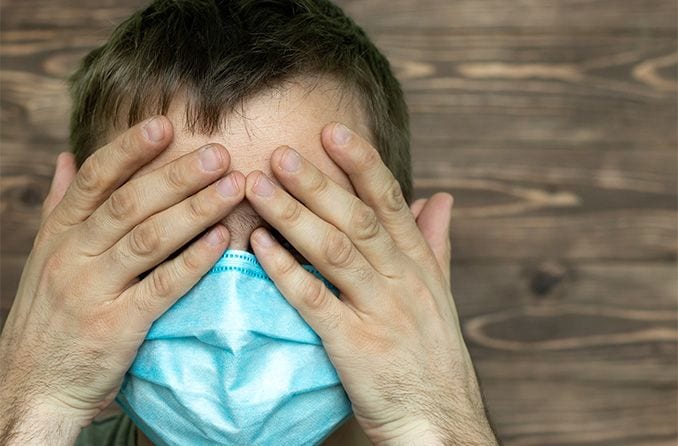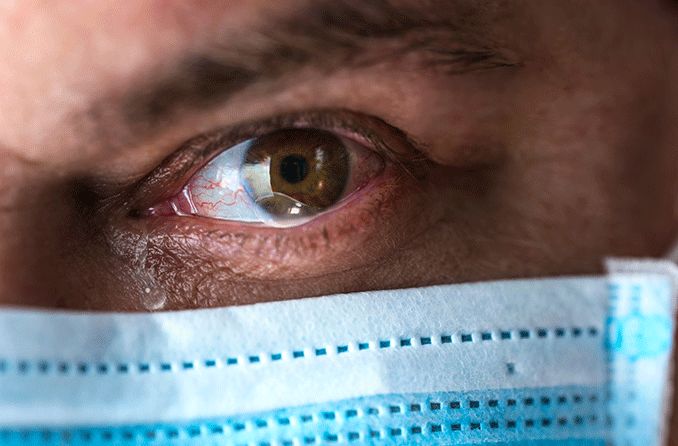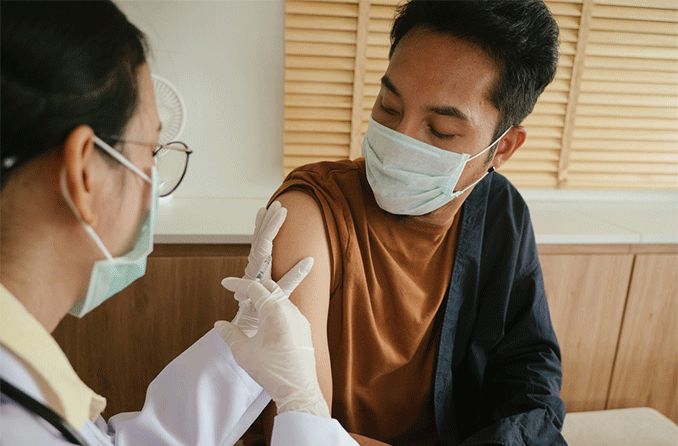Is blurry vision a symptom of COVID-19?
Most research shows that blurry vision is probably not a direct symptom of COVID. However, COVID can lead to separate conditions that cause blurriness and other vision symptoms. This can also happen after you recover from an infection.
If blurry vision is your only symptom, it could be caused by an unrelated eye problem.
COVID-related eye problems often happen alongside fever, fatigue or other COVID symptoms, but it isn't guaranteed. When in doubt, get tested and get medical help if needed.
Here's how to tell if your blurred vision could be related to COVID:
Blurry vision with a COVID infection
While the viruses that cause COVID-19 morph and change all the time, the symptoms of each variant mostly stay the same. But one person's experience can be very different from the next.
Sometimes COVID causes blurry vision by way of:
Pink eye
In 2023, a new version of the omicron variant called arcturus made headlines for causing conjunctivitis (pink eye) , particularly in children and babies. Arcturus has since faded away, but that doesn't mean we've seen the end of COVID pink eye.
Pink eye has been linked with COVID since the early days of the pandemic. Earlier studies showed that pink eye was the most common eye condition caused by COVID.
Pink eye or its symptoms happened in 4-8% of people with COVID, according to one review. This number could go up or down in the future.
The most common symptoms of COVID conjunctivitis seem to be:
A feeling that something is stuck in your eye
Less common symptoms include:
Blurred vision
Eye discomfort
So, while COVID can cause pink eye, the latest research shows it isn't very common. It's even less likely to cause blurry vision — but it is possible.
Dry eye
A review of many studies found that dry eye was the most common eye-related complaint in people with COVID. Dry eye happens when your tears don't keep your eyes as comfortable as they should.
Around 1 in 6 people with eye symptoms said they had dry eyes or it felt like something was stuck in their eye — a common dry eye symptom.
Eye dryness can also cause:
Blurry vision
Eye redness
A stinging, burning or “scratchy” sensation in your eyes
Light sensitivity
Blurred vision caused by dryness usually gets better when you blink.
Other eye problems
COVID can lead to other eye conditions that cause blurred vision, too. They include:
Keratitis – Inflammation of the cornea alone. It may feel like it's hard to open your eyelid.
Uveitis – Inflammation of the middle layer inside your eye. It usually causes sudden blurry vision and needs to be treated.
Problems like these are uncommon with COVID, but they may lead to other complications if they aren't treated. Call an eye doctor if you think you have one of these conditions.
Stroke
Rarely, COVID can lead to a stroke (a blood vessel blockage or rupture in your brain).
COVID could also increase the risk of stroke after you recover. In one study, participants were 52% more likely to have a stroke within a year of their illness.
People with certain conditions could be at higher risk:
High blood pressure
Diabetes
Other cardiovascular conditions
You can have sudden blurry vision in one eye or both during a stroke.
The acronym F.A.S.T. can help you check for a stroke:
F ace – When you smile, one side of your face looks droopy.
A rms – When you raise both arms, one arm is lower than the other.
S peech – Speech may sound slurred or unusual.
T ime – Call 911 right away if you notice any of these problems.
Blurry vision after COVID
COVID can also trigger conditions that may not cause blurred vision until after your infection clears up. These conditions can happen shortly after other COVID symptoms start, but they can also take several weeks. They can also happen even if your COVID infection is asymptomatic.
Retina problems
The retina is a thin layer of cells that registers light inside your eye and sends the signals to the brain.
Rarely, COVID can cause problems with the blood vessels in the retina. The symptoms can include blurred vision or blurry spots.
Eye stroke – An artery blockage that stops blood from reaching the retina. Its medical name is retinal artery occlusion. It can cause sudden blurry vision or vision loss.
Vein blockage – A vein blockage that stops blood from flowing away from the retina. Its medical name is retinal vein occlusion (RVO). It can lead to blurred vision or vision loss. A recent study found that COVID may double your risk for an RVO.
Hemorrhage – Bleeding in the retina. It can cause blurry or blind spots and vision loss.
Talk to a doctor right away if you notice sudden blurry vision, whether you have COVID or not.
Other medical conditions
There have been reports of other health problems that can also cause blurry vision after COVID.
One of them is POTS , which stands for postural orthostatic tachycardia syndrome. It happens when there's miscommunication between your nerves and heart.
POTS symptoms usually get worse when you stand up, then get better when you lie down.
POTS can cause blurred vision, but the more common symptoms are:
Dizziness, lightheadedness or fainting
Heart palpitations (you can feel your heartbeat)
Shortness of breath
Sweating
Chest pain
Symptoms can vary and may improve with treatment.
Guillain-Barré syndrome is another condition connected to COVID. It's a serious nerve problem that can cause symptoms ranging from mild, temporary weakness to full paralysis. In severe cases, it can be life-threatening.
While most people are able to recover, recovery can be physically and mentally challenging.
Muscle weakness is the main symptom of Guillain-Barré, but it can affect the body in many ways. Some people notice blurry vision, double vision or problems moving their eyes.
Some other possible symptoms are:
Tingling, crawling or pain sensations
Problems walking and controlling other muscles in the body
Tender or painful muscles
Low blood pressure
Unusual heart rate
Long COVID
Long COVID is when symptoms start or continue weeks, months or years after you were exposed to COVID.
Like many other aspects of this complicated disease, researchers still have more to learn about long COVID and how it could affect your eyesight.
According to the National Institutes of Health, long COVID can cause several eye-related symptoms:
Vision changes
Eye redness
Yellow eyes (a sign of a liver disease called jaundice)
Some people with long COVID share symptoms with people who have chronic fatigue syndrome . Like POTS, chronic fatigue can cause blurry vision when you stand up.
READ MORE: Can a COVID vaccine cause eye-related side effects?
Treatment
When COVID leads to blurry vision, the most common problems can either be treated or should go away on their own. But the treatment can vary depending on which condition you have.
A physician or eye doctor can help you decide your next steps in the safest way possible.
What else could be making my vision blurry?
Most of the conditions that cause blurriness aren't related to COVID. Some of the more common ones are:
Refractive errors like nearsightedness and astigmatism
Dry eyes (unrelated to COVID)
READ MORE: What else can cause blurry vision?
Schedule an appointment with an eye doctor
These are just some of the possible complications of COVID, and researchers are still learning about the ways this disease affects your eyes.
If blurred vision is your only symptom, it could be caused by an unrelated condition. Schedule an eye exam with an eye doctor near you to talk to someone specially trained to diagnose and treat eye problems.
